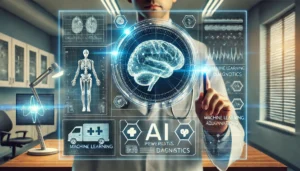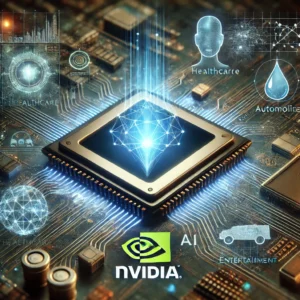Google’s Willow Quantum Chip: A Game-Changer in Computing Power and Error Correction
Introduction
Google has been a trailblazer in the world of technology, and its advancements in quantum computing are no exception. Among its revolutionary projects, the Willow Quantum Chip stands out as a monumental leap in computing power and error correction. But why is this chip a game-changer, and what makes it so impactful? Let’s dive into the details.
What is Quantum Computing?
Quantum computing leverages the principles of quantum mechanics to process information. Unlike classical computers, which use bits as 0s or 1s, quantum computers use qubits that can exist in multiple states simultaneously, thanks to phenomena like superposition and entanglement.
This allows quantum computers to solve problems that would take classical systems centuries to compute. Tasks such as complex simulations, cryptographic analysis, and large-scale optimizations are no longer out of reach.
Google’s Journey in Quantum Computing
Google’s foray into quantum computing began over a decade ago, culminating in significant milestones. In 2019, it claimed “quantum supremacy” with its Sycamore chip, solving a problem in minutes that classical computers would take thousands of years to crack. Now, the Willow chip marks another giant leap forward, pushing the boundaries of what quantum systems can achieve.
Features of the Willow Quantum Chip
Enhanced Computing Power
The Willow chip delivers unparalleled computational abilities, making tasks like simulating molecular structures and optimizing large-scale systems exponentially faster.
Advanced Error Correction Mechanisms
Error correction is one of the toughest challenges in quantum computing. Traditional systems are prone to errors due to the fragile nature of qubits. The Willow chip incorporates cutting-edge algorithms and hardware designs that significantly reduce errors, ensuring reliability.
Scalability and Efficiency
The Willow chip isn’t just powerful—it’s scalable. Its design allows for the addition of more qubits without compromising performance, making it ideal for future quantum systems.
Why Error Correction Matters in Quantum Computing
Challenges in Quantum Systems
Qubits are highly sensitive to environmental factors, leading to issues like decoherence and noise. Without robust error correction, quantum computations can become unreliable.
Willow’s Breakthrough
The Willow chip’s error correction mechanism is groundbreaking. It uses a combination of surface codes and advanced quantum gates to detect and rectify errors in real-time, paving the way for stable quantum operations.
Applications of the Willow Quantum Chip
Research and Development
From drug discovery to climate modeling, the Willow chip accelerates research that requires vast computational resources.
Cryptography and Security
Quantum computers can crack classical encryption, but they can also create unbreakable cryptographic systems. Willow contributes to both sides of this spectrum, making communication systems more secure.
Artificial Intelligence
The integration of quantum computing with AI is transformative. Willow enhances machine learning models by processing vast datasets more efficiently.
Comparisons to Competitors
Willow vs. IBM Quantum
Google’s Willow chip outpaces IBM’s offerings in error correction and qubit coherence time, placing it ahead in the quantum race.
Position in the Global Quantum Race
With Willow, Google solidifies its leadership in quantum computing, outshining competitors like IBM and D-Wave in several key metrics.
Future of Quantum Computing with Willow
The Willow chip isn’t just a technological marvel—it’s a glimpse into the future. Its applications span industries like healthcare, finance, and logistics, promising innovations that can redefine our world in the coming decade.
Challenges Ahead
Despite its potential, the Willow chip faces challenges such as high development costs and difficulties in integrating quantum systems with classical infrastructure. Addressing these hurdles is crucial for mainstream adoption.
Ethical Considerations in Quantum Computing
As with any powerful technology, quantum computing raises ethical questions. Privacy concerns and the potential misuse of quantum capabilities must be addressed to ensure its responsible use.
Conclusion
Google’s Willow Quantum Chip represents a significant step forward in quantum computing. With unparalleled computing power, advanced error correction, and immense scalability, it is poised to revolutionize industries and solve problems once considered insurmountable. However, realizing its full potential will require addressing key challenges and ethical considerations.
FAQs
1. What makes the Willow Quantum Chip unique?
The Willow chip stands out for its advanced error correction mechanisms, enhanced computing power, and scalable design.
2. How does the Willow chip address error correction?
It uses sophisticated algorithms and hardware designs, including surface codes and quantum gates, to detect and rectify errors in real-time.
3. What industries will benefit the most from Willow?
Industries like healthcare, finance, cryptography, and AI stand to gain significantly from the Willow chip’s capabilities.
4. How does Google’s quantum effort compare to IBM?
Google’s Willow chip surpasses IBM in error correction, coherence time, and scalability, making it a leader in the quantum race.
5. What are the main challenges in adopting quantum computing?
High costs, integration with classical systems, and addressing ethical concerns are the primary challenges in quantum computing adoption.
Please don’t forget to leave a review.
on Techcyclohub
.__________________________________________________________________________________________________
Suggested Books
- “Quantum Computing for Everyone” by Chris Bernhardt
- A beginner-friendly introduction to the fundamentals of quantum computing.
- “Quantum Computation and Quantum Information” by Michael A. Nielsen and Isaac L. Chuang
- The definitive textbook for understanding quantum computing concepts and techniques.
- “Quantum Computing: A Gentle Introduction” by Eleanor G. Rieffel and Wolfgang Polak
- Explains the basics of quantum mechanics and quantum computing in an accessible way.
- “The Age of Em: Work, Love, and Life When Robots Rule the Earth” by Robin Hanson
- Explores the societal implications of advanced technologies, including quantum computing.
- “Quantum Mechanics: The Theoretical Minimum” by Leonard Susskind and Art Friedman
- For those wanting to delve deeper into the physics behind quantum computing.








